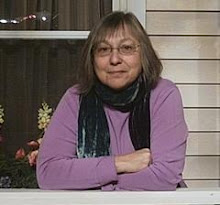The City of Brooklyn
A hundred years ago, Brooklyn was a separate city. The icon of Brooklyn as a city was its City Hall, now called Borough Hall. It was here that the mayor had his offices and the city council, court and jail were located. The construction of the building began in 1837 but took fourteen years to complete, delayed by the usual fiscal problems. It was just ten years ago that the crowning piece, the statue of justice on the roof, was installed. But the fact that it was completed so recently is a testimony to the continued importance of the building, which is the home of the Borough President.
Brooklyn conscripted into the ranks of NYC
Brooklyn was a city for seventy years before it was absorbed, along with the other boroughs, into New York City. From the very beginning, control and dominance of the area was in Manhattan. Perh
 aps the first and most important coup was Manhattan's gain of control over the East River. This was granted by the Dongan Charter (see photo of Thomas Dongan) when New York was a colony under British rule. As a result of the charter, Brooklyn had no say about its own waterway.
aps the first and most important coup was Manhattan's gain of control over the East River. This was granted by the Dongan Charter (see photo of Thomas Dongan) when New York was a colony under British rule. As a result of the charter, Brooklyn had no say about its own waterway. In the mid 1850's, Brooklyn was a separate and growing city and considered, famously so, in the Emily Lazarus poem inscribed on the Statue Of Liberty,"Give me your tired, your poor, Your huddled masses yearning to breathe free....," which refers to the "air-bridged harbor that twin cities frame."
Brooklyn has always maintained a fierce pride in its own separate identity and fought hard to maintain its independence. Brooklynites wanted to preserve the special feeling that characterized Brooklyn culture. But it was no match for Manhattan's determination to become the most powerful and influential city in the country. And Manhattan never seriously regarded Brooklyn as a separate and competing city, seeing it rather as a "suburban bedroom community" for Manhattan middle classes. The next threat to Brooklyn independence came in 1857 when the state of New York combined the police, fire and health departments of the two cities, giving Manhattan another large measure of control over Brooklyn. 

As the century moved on, Brooklyn's freedom became precarious. Manhattan's quest for incorporation intensified, fueled by competition with Chicago, which was threatening to overtake Manhattan in size and prestige. Manhattan needed to expand to assure supremacy over Chicago and other challengers and to gain more waterfront property. This meant annexation of Brooklyn and consolidation. Brooklyn, after all, had much to offer in addition to population. It was home to half of the sugar cane industry and all of the Atlantic oil refineries, as well as to the bakeries and breweries. Even so, Brooklyn was running dry, literally running out of water and money.
The consolidation so coveted by Manhattan came to a vote in 1898. The result: 64,744 pro consolidation and 64,467, against. By a margin of 277 votes, Brooklyn as a separate entity --The City Of Brooklyn-- no longer existed. If there were hanging chads or counting irregularities we will never know. Brooklyn, linked by the bridge, is subsumed under the banner of New York.
Pre-consolidation Buildings and Statues
Cadman plaza, a green square, has two interesting statues:
Cadman plaza, a green square, has two interesting statues:
Christopher Columbus statue was sculpted by Emma Stebbins, best known for her Bethesda Fountain in Central Park.
The General Post Office building, now the Bankruptcy Court, is a wonderful structure worth seeing, with an interior that has a beautiful semi-circular balcony that will transport you back in time. (Beecher & General Post Office)
Post-consolidation Building
The Brooklyn Municipal Building, across from the old City Hall at 10 Joralemon Street, is similar in tone and mood to the Manhattan Municipal Building but smaller in scale. Many government agencies, including the City Clerk's office where marriage licenses are obtained, are located here.

No comments:
Post a Comment